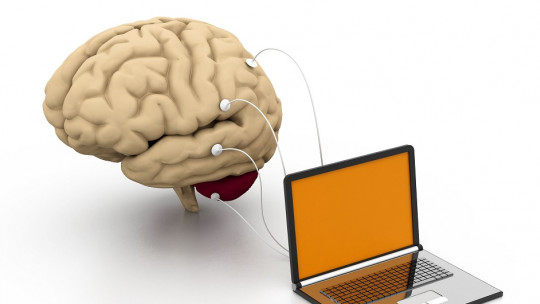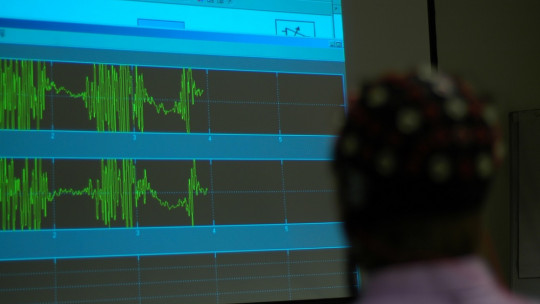
Although they may not be one of the best-known procedures, biofeedback and neurofeedback are treatments that are gradually enjoying increasing applicability in different disorders, both medical and psychiatric. These are two techniques that are usually closely associated, with neurofeedback being one of the existing types of biofeedback. But despite this, there are some differences between both concepts. In this way, we are going to dedicate this article to talking about the differences between biofeedback and neurofeedback
Definition of both concepts
There are slight differences between neurofeedback and the rest of the types of biofeedback, but before being able to determine what they are, it is first necessary to make a brief description of each of these concepts.
Biofeedback: basic description
Biofeedback is known as that set of techniques used at a therapeutic level that base their operation on awareness of biological and physiological processes that our body carries out in different problem situations. This awareness is carried out with the help of different procedures or technologies, and it is intended that after this the subject can not only recognize but also voluntarily control biological processes that are generally not conscious.
The main objectives of this technique are to acquire control over the physiological system, learn to maintain self-control of said system in the absence of biofeedback and generalize said self-control.
The type of responses or biological elements that can be tried to regulate using this technique is very varied, and can belong to practically any body system. Temperature, electrodermal activity, muscle control, heart rate or blood volume in a certain area are examples of this. Also the instruments used for its measurement are very variable Based on the elements measured, we can find different types of biofeedback, electromyographic being one of the best known (based on muscle activity).
It has been used with proven effectiveness in different disorders and diseases, such as neurological, cardiac, muscular, intestinal, respiratory problems, chronic pain, allergies or psychological problems such as stress or anxiety.
neurofeedback
When it comes to neurofeedback, we are faced with a specialization of the previous technique which is based on the control of the electrophysiological activity of the brain itself. In other words, in this type of biofeedback the recording of brain electrical activity is used to train the subject to control it through visualization.
The recorded brain waves will be converted into a signal which will be used to teach control of brain activity patterns. It is possible that the patient is directly shown his encephalogram or that said signal is previously analyzed and processed in such a way that it is transformed into different visual stimuli (for example, numbers) or into topographic maps of the brain that allow the areas to be visualized in 3D. of the brain and its activity.
This type of biofeedback is very useful for training in various skills and for patients to observe their brain activity in disorders or problems such as insomnia, epilepsy, ADHD, Obsessive-Compulsive Disorder, post-traumatic stress disorder, memory problems, lack of impulse control, learning disabilities, aphasias and other language problems or anxiety or stress levels. Also in paralysis and paresthesia, eating disorders or urinary incontinence.
Main differences between biofeedback and neurofeedback
As we have seen through their definition, biofeedback and neurofeedback are two techniques that present a large number of similarities, neurofeedback being in fact a type of biofeedback. However, They present a series of differential characteristics that could lead to separating both types of technique. Among them the following stand out.
1. Level of specificity
One of the clearest differences that is visible from the beginning of the article is the level of specificity of both techniques. Neurofeedback, also known as electroencephalographic biofeedback, is a specific type of biofeedback aimed at learning to control brain activity patterns. The term biofeedback would encompass this and other types of biofeedback, It is necessary to specify the type of biological information that is going to be worked on
2. Processes on which we work
Although the objective of both biofeedback and neurofeedback is to help patients learn to control processes that are in principle unconscious in such a way that these processes do not escape their control and cause harm, the truth is that the areas of application are somewhat different from each other.
In general, at the biofeedback level, work is usually done at the level of control of the chosen activity, that is, learning to control respiratory or cardiac activity, for example, or the flow of blood to certain parts of the body. It It can also be used psychologically to reduce anxiety or stress levels but it mainly applies to bodily aspects.
However, neurofeedback tries to grant some control over the level of brain activation. Although this includes a certain corporality, the aspects that will be especially focused on are mainly mental, and mental activation must be controlled in order to introduce changes in the brain pattern.
3. Level of complexity
Another possible difference between neurofeedback and other types of biofeedback occurs in the level of complexity involved in measuring and using the technique. And although muscle or even respiratory control is a concept that is not strange and it is easy to visualize how to carry it out (although it can be more complex than it seems), the same does not happen when we talk about patterns of brain activity. We are not used to trying to exert some control over this organ, and it can be somewhat abstract to understand that certain ways of acting correspond to the stimulus that is presented to us.
4. Technical difficulties
The aforementioned complexity can be not only on a practical level, but also methodological Correctly recording encephalographic activity and also pointing out the areas responsible for it presents more difficulties than recording other types of activities, despite the fact that there is currently more and more knowledge of mapping and knowledge of brain functioning.
It must also be taken into account that the activity necessary to activate certain brain reactions in each brain can vary enormously depending on nervous configuration or even the personality of the patient.








